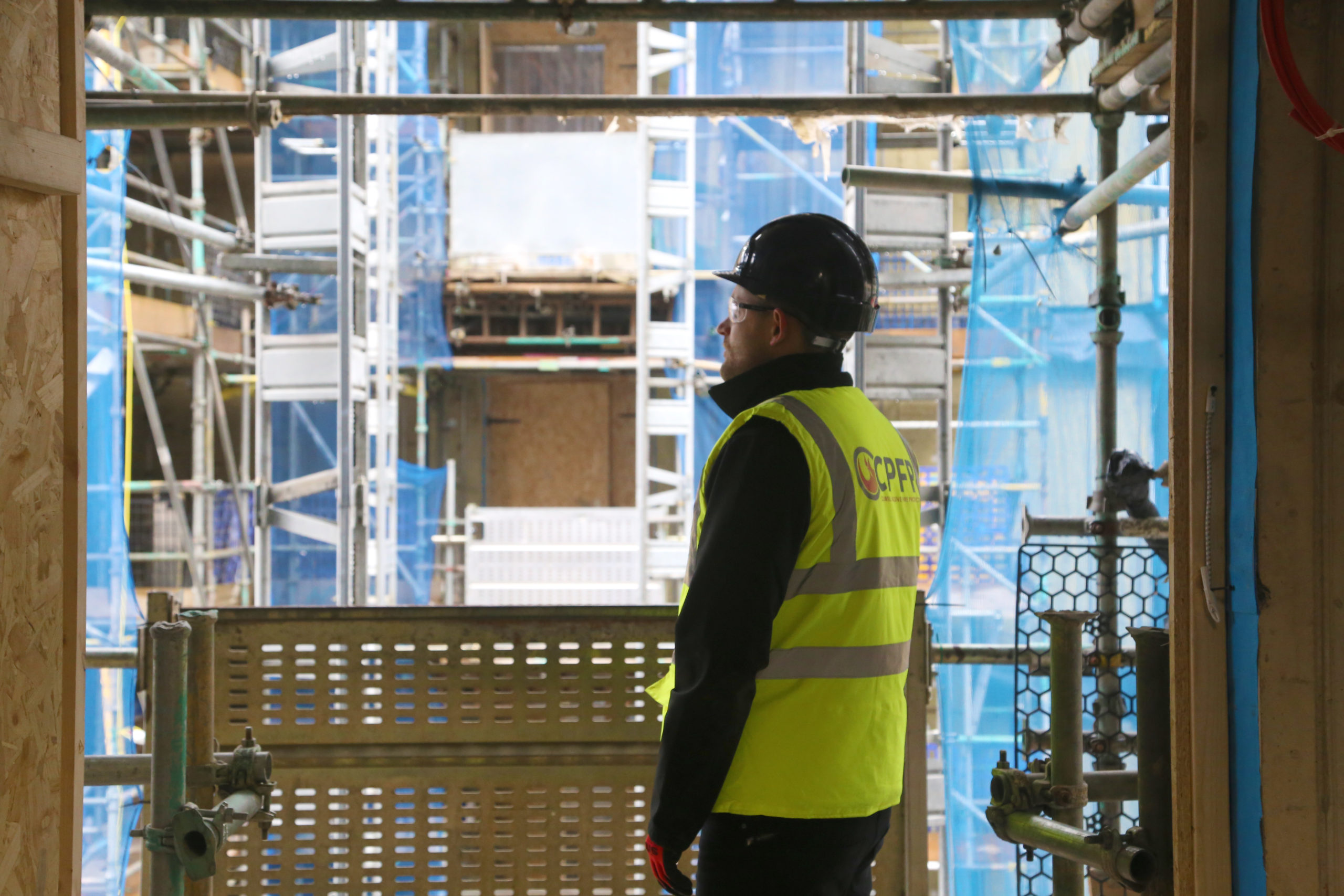Steel Encasement – An Overview of Steel Encasement
Steel encasement is a Passive Fire Protection (PFP) measure built into the structure of a building. Its purpose is to protect the main structural components of a building from collapse or damage in the event of a fire. By protecting key structural elements, steel encasement can prevent building collapse and save lives.
Steelworks are commonly used in multi-storey buildings to frame and support the structure. By encasing steel columns, joists, and beams, PFP installers are protecting the building from collapse, and the inhabitants from disaster.
In this guide to steel encasement our experts at CPFP explain what it is, how it works, and materials used. Check out our services to find out how CPPF can help protect your building in the event of a fire.
What is Steel Encasement?
Steel encasement is a fire protection measure for structural steelwork within buildings. The PFP materials insulate steel elements, protecting them from the high temperature generated by fire. This in turn prevents damage to the steel components, or worse – collapse. Steel has its loadbearing capabilities compromised at high temperatures, around 550°C, commonly reached during a fire.
Many PFP measures work to limit the spread of fire and smoke, such as fire doors or cavity barriers, giving occupants time to escape and reducing the spread of damage. Steel encasement measures, on the other hand, work to prevent the structural damage of a building by protecting loadbearing steelwork. Both objectives ultimately save lives and prevent costly remedial works for buildings.

How Does Steel Encasement Work?
Methods of steel encasement can vary according to the material choice. Steel encasement is achieved using either non-reactive materials, such as boards or sprays, or reactive materials, of which intumescent coatings are the most popular.
All methods work to prevent the heat of fire affecting structural steelwork through adequate fire resistance.
Boards
Fire resistance boards surround structural steelwork to block flames and smoke for an extended amount of time – from 30 to 180 minutes. Boards can surround steel columns, beams, and joists for comprehensive protection of a building’s integrity. Steel encasement boards are available in a range of thicknesses and with various lining options to offer the required level of fire protection.
Boards are popular in commercial buildings and spaces where they are visible as they have a clean, boxed look. This means steel columns, beams, and joists are completely covered and therefore less intrusive on the look of interior spaces.
Sprays
Spray protection for steel construction elements are less common in the UK and mostly used within the United States. As a material, protection sprays are relatively cheap and can be built up in thickness without incurring costs. They are effective at covering complex shapes and reaching details within steel elements for comprehensive protection.
Intumescent Coatings
The most commonly used intumescent coating is thin-film coating, applied to structural steel columns, beams and joists either off- or on- site. These paint-like coatings achieve attractive surface finishes and consist of a primer, a basecoat and a sealer coat.
Intumescent coatings provide effective insulation for steelwork as the coating swells as a result of chemical reactions caused by high temperatures during fire. The swollen coating creates a low conductivity layer of protection which can resist fire for 30, 60, 90 and even 120 minutes depending on the type.
Intumescent coatings offer a good alternative for those who don’t want to use plasterboard to cover the steelwork, perhaps due to aesthetic or space decisions. When applied by professionals, the suitable amount required for adequate fire protection is applied with consistency.
Thick film intumescent coatings were developed for use in hydrocarbon fires which reach higher temperatures and therefore required a more durable coating, however now thick film coatings are used on commercial high rises too. Thick film coatings are usually epoxy based and thicker once applied than thin film, yet the expansion rate is less.
Steel Encasement British Standards
According to Building Regulations (Document B), all steelworks within a building in the UK must have PFP measures in place to prolong fire resistance and maintain building integrity for a reasonable period. The duration and extent of the fire protection measures depend on a range of qualities such as:
- Shape and size of particular steelwork
- Perimeter of exposed steelwork
- Duration of fire resistance specified
- Protection measure used
- The limiting temperature of steelwork
- Test standard for BS requirement
Fire resistance of materials used for steel encasement is measured according to fire tests outlined in BS 476-21: the fire tests performed on building materials and structures in order to determine the fire resistance of loadbearing elements of construction. BS EN 1363 establishes the general requirements for determining fire resistance of elements of construction and is also applicable to steel encasement materials.
Professional Steel Encasement with CPFP
For expert advice and installation of PFP measures, talk to our PFP experts at CPFP. We offer a range of PFP services to ensure the safety and stability of buildings across residential, commercial, and industrial sectors. Highly experienced and third party accredited with the IFCC, we provide professional, reliable, compliant PPF measures to keep people and buildings safe in the event of a fire.
Find out more about our steel encasement services and how our specialists can help you with structural PFP measures.
See more: Structural Fire Protection – Structural Measures to Prevent Spread of Fire
Speak to Us Today.
Address: The Old Angel, Flax Bourton, Bristol, BS48 3QQ
Phone: 0117 450 9943
Email: info@cpfp.co.uk
